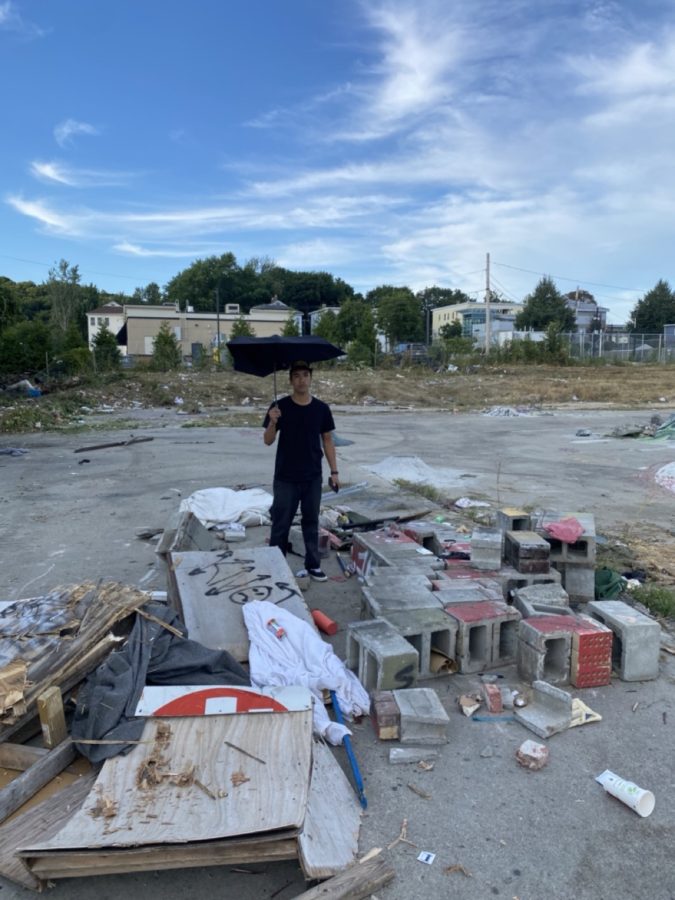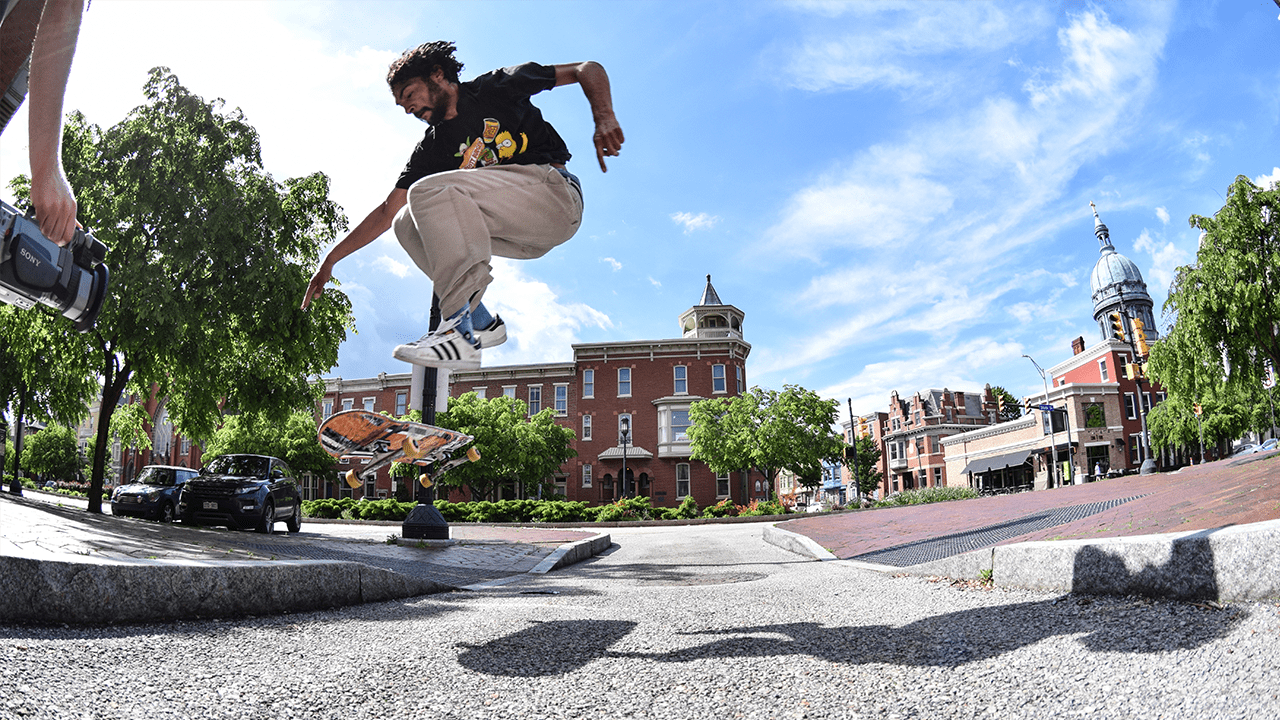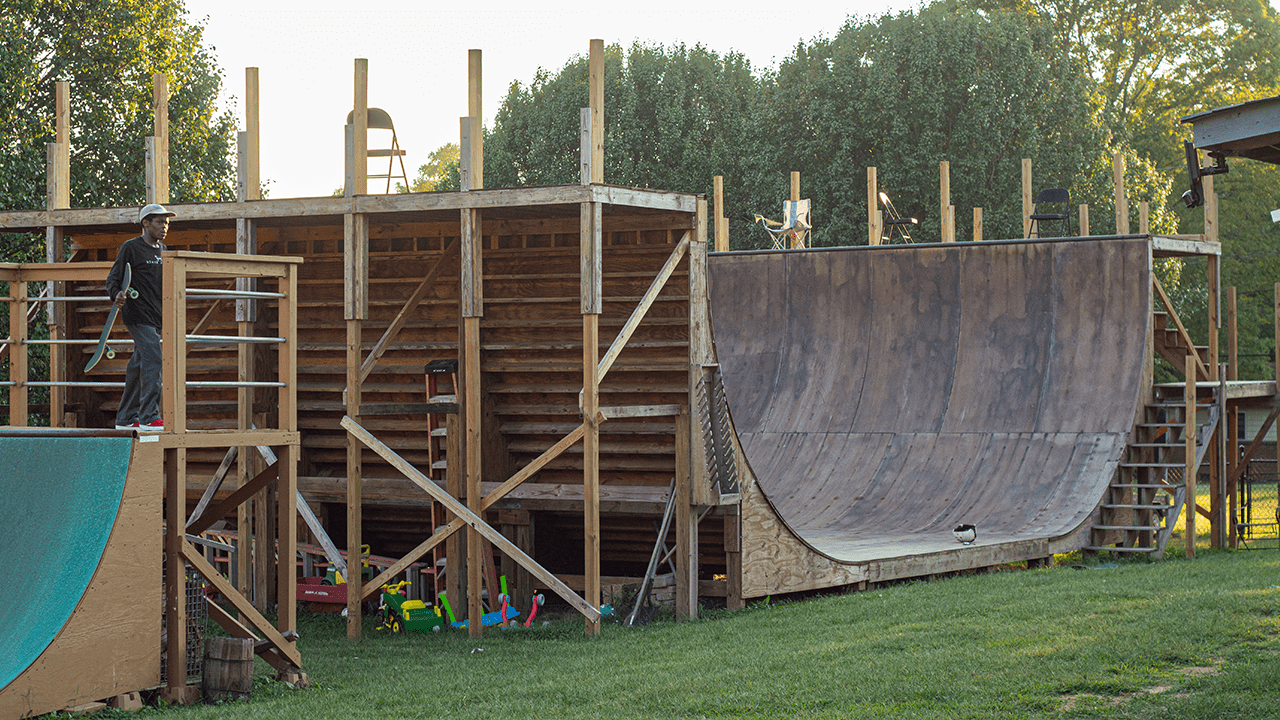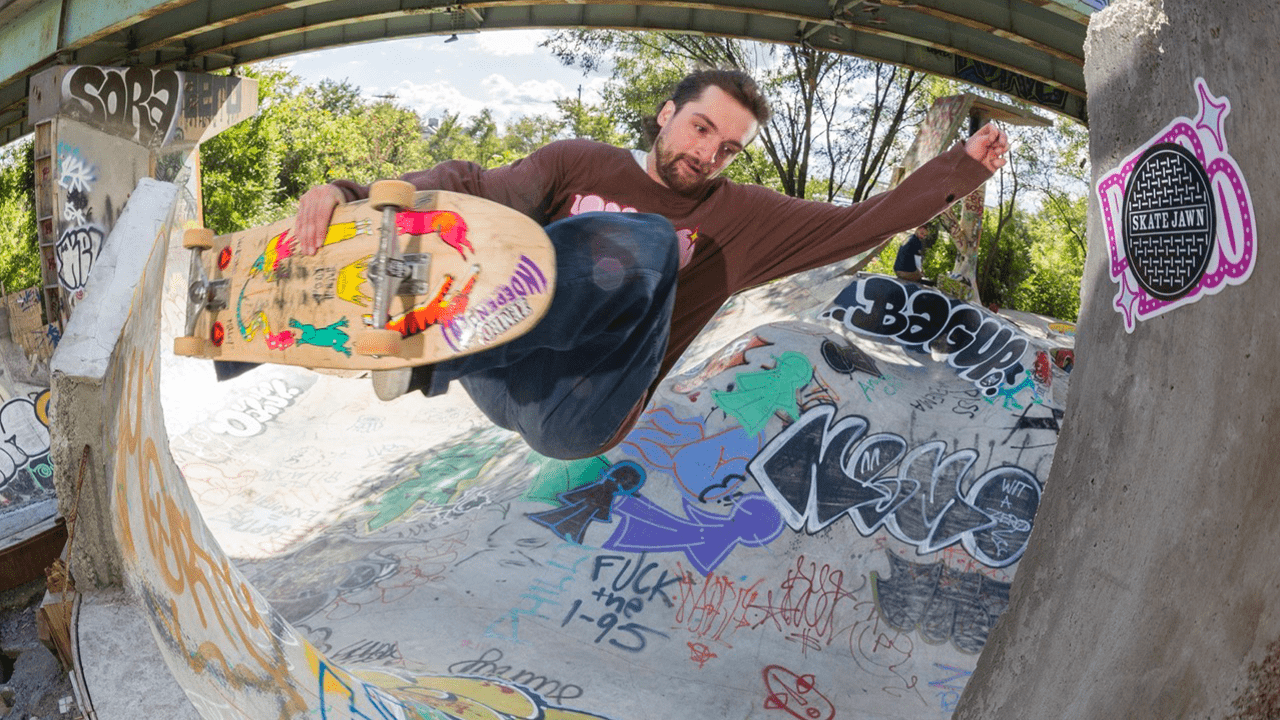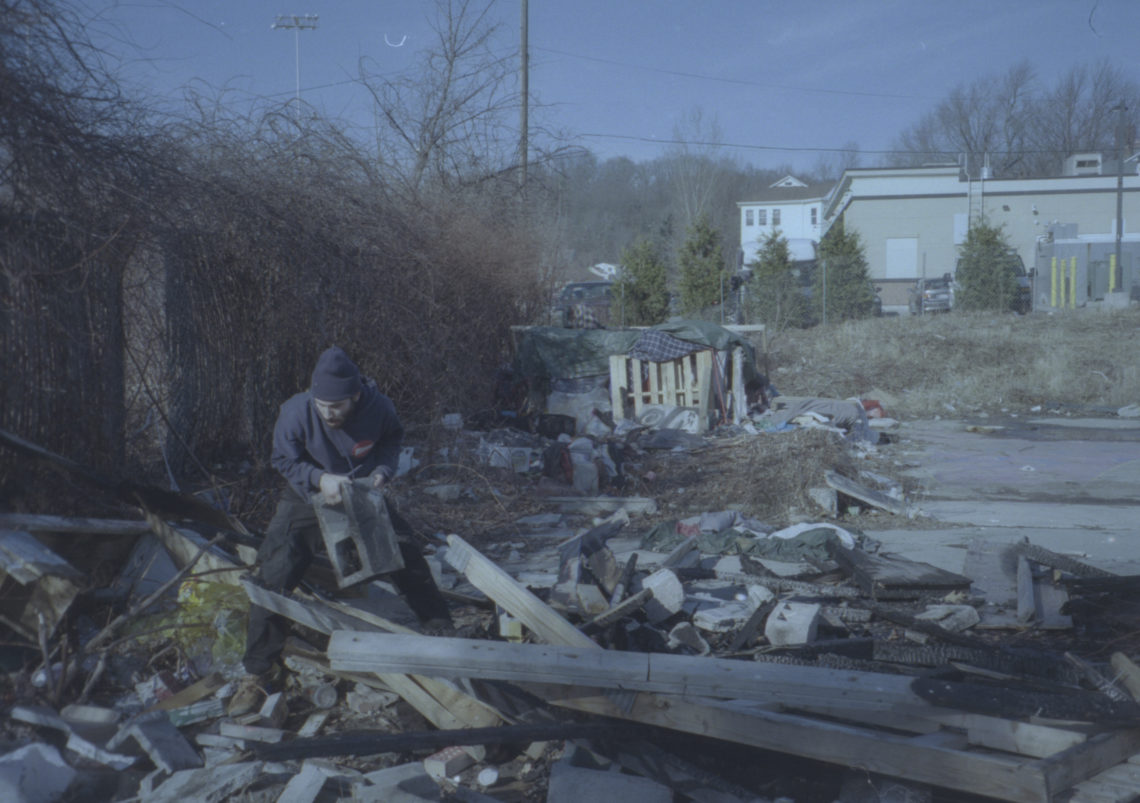
Jacob Folsom-Fraster moved from Boston to the Central Massachusetts cosmopolis of Worcester in 2013. Nearly a decade later, he’s at the helm of both a community nonprofit and a DIY building effort that have together transformed the city’s skate scene. I called Jacob up to ask about the Sharkside experience, Push Worcester, and the state of DIY amid rapid development.
Interview by Max Harrison-Caldwell
What’s Sharkside? I thought Worcide was the DIY in Worcester?
Worcide was sick, but it was gnarly transition, and for the average street skater it was tough to skate. Sharkside came about because some friends and I wanted one perfect ledge, and since Worcide was around since 2007, we figured we could get away with another DIY.
I thought I saw Sharkside get demolished last year?
Every fall the landowner would send landscapers to destroy all the trees and do a sweep of the encampments and people living down there. One time, the landscapers said they were told not to destroy the skate stuff because the owner had seen younger kids down there riding bikes and skating and she thought it was cool. Then, last fall, they did their sweep and also took out as many obstacles as they could. They couldn’t do the whole pyramid, they couldn’t do the small quarterpipe, and a few weeks later there was already another pallet house built so we were just like cool, let’s rebuild the ledge. Maybe we get another few weeks out of it, maybe we get another four years. Who knows.
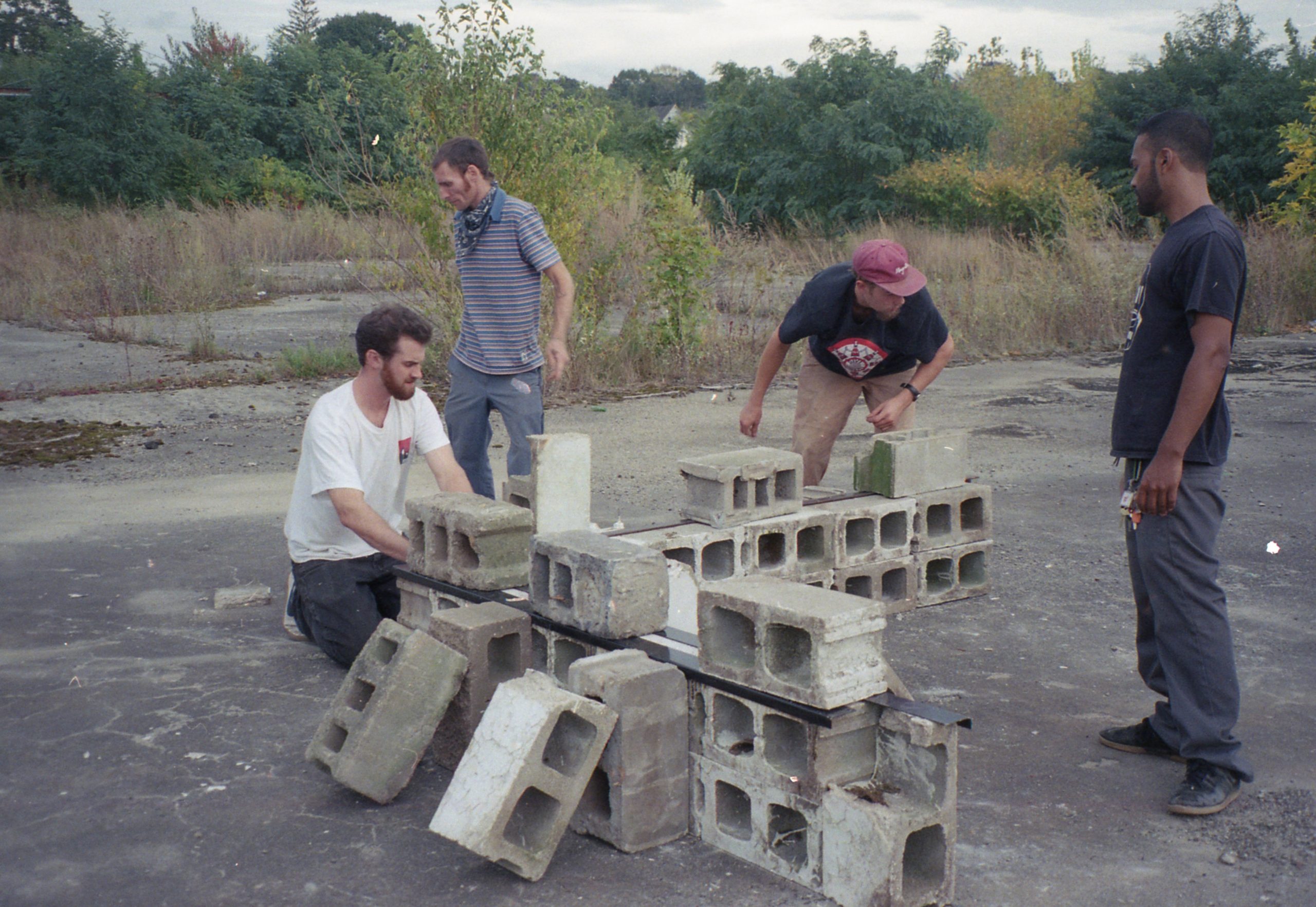
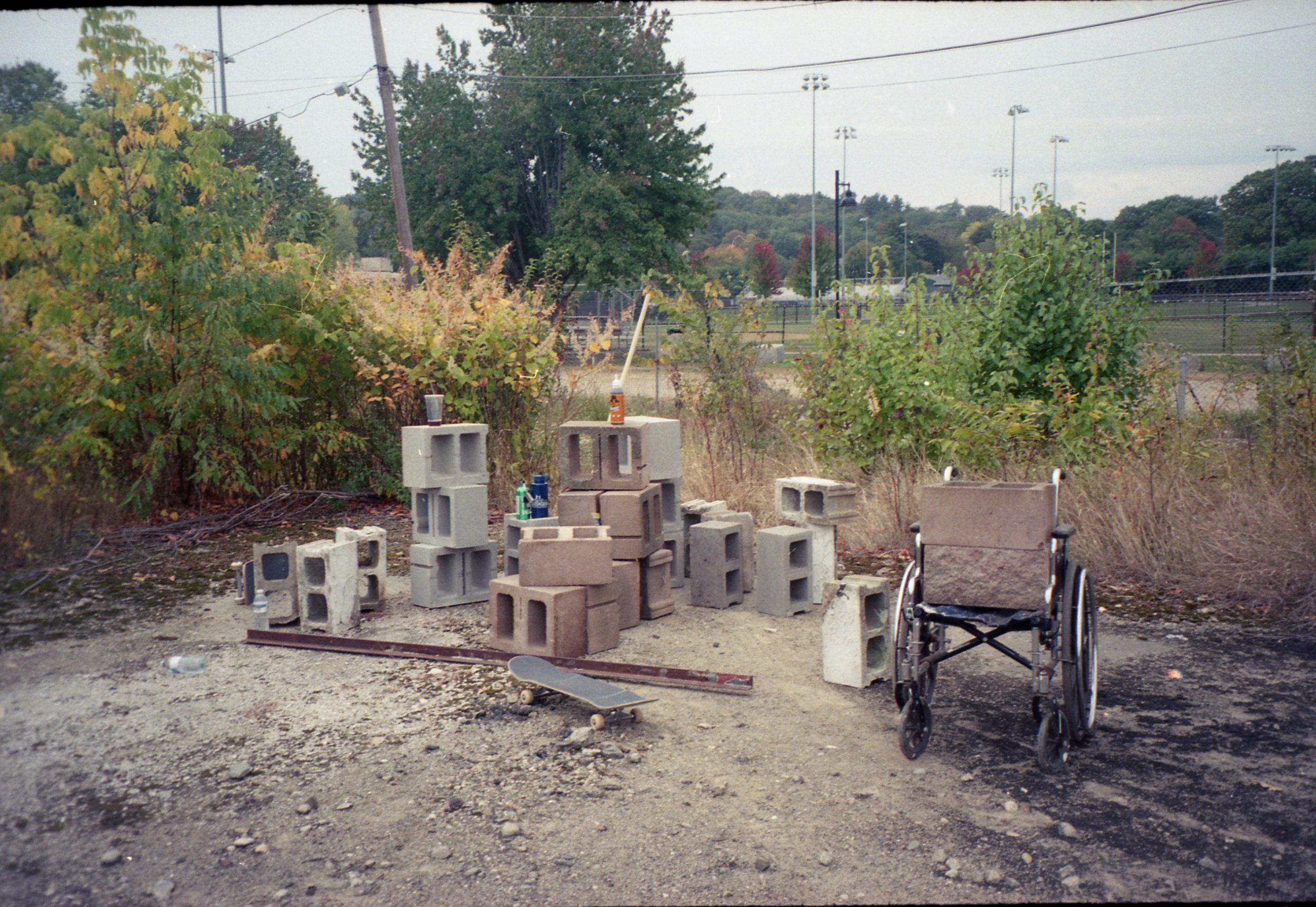
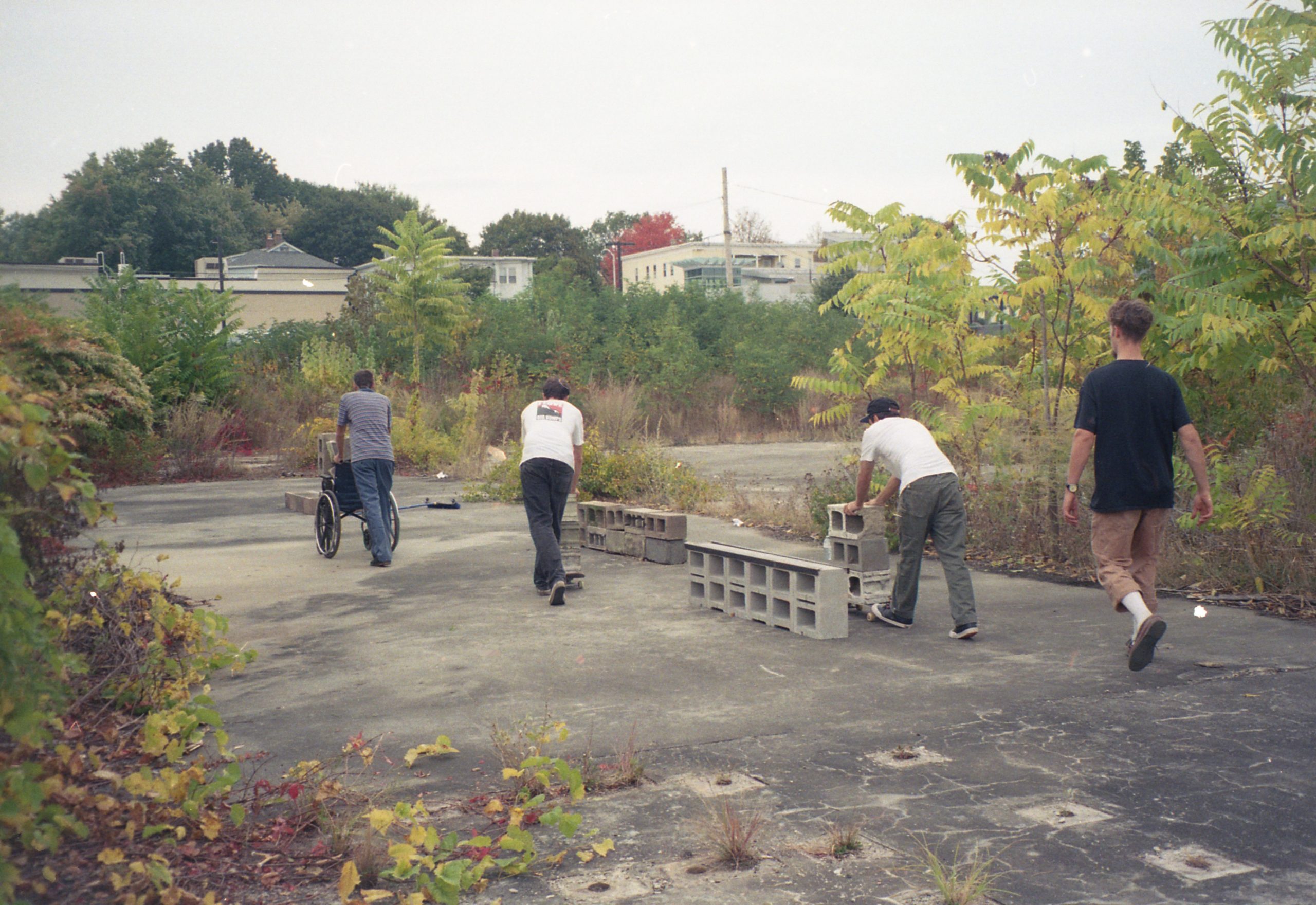
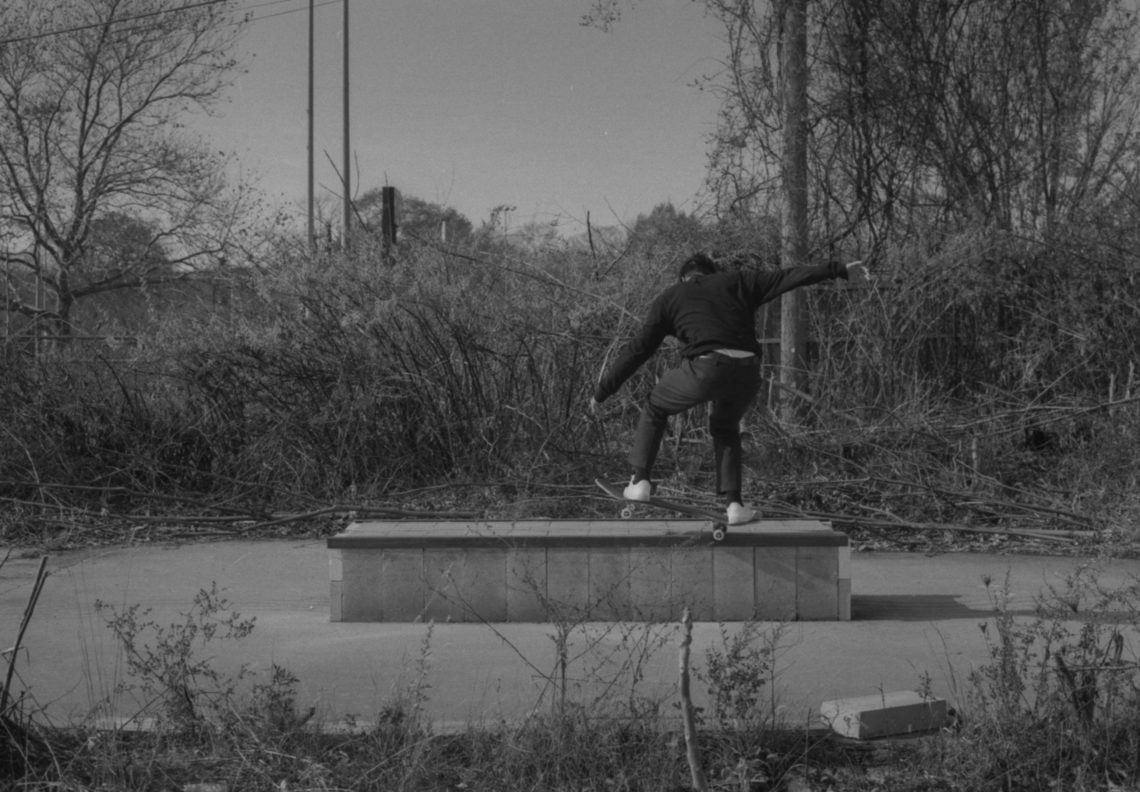
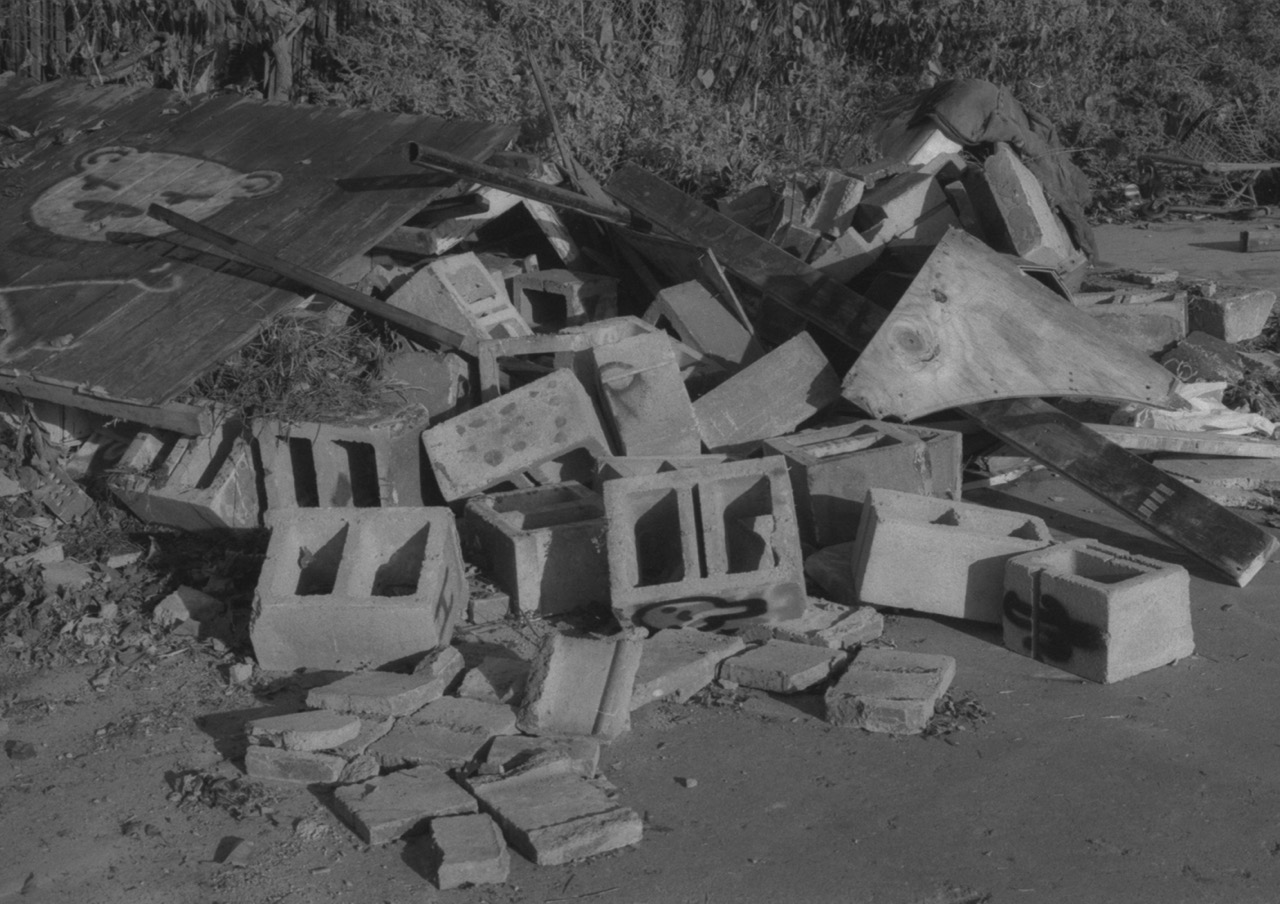

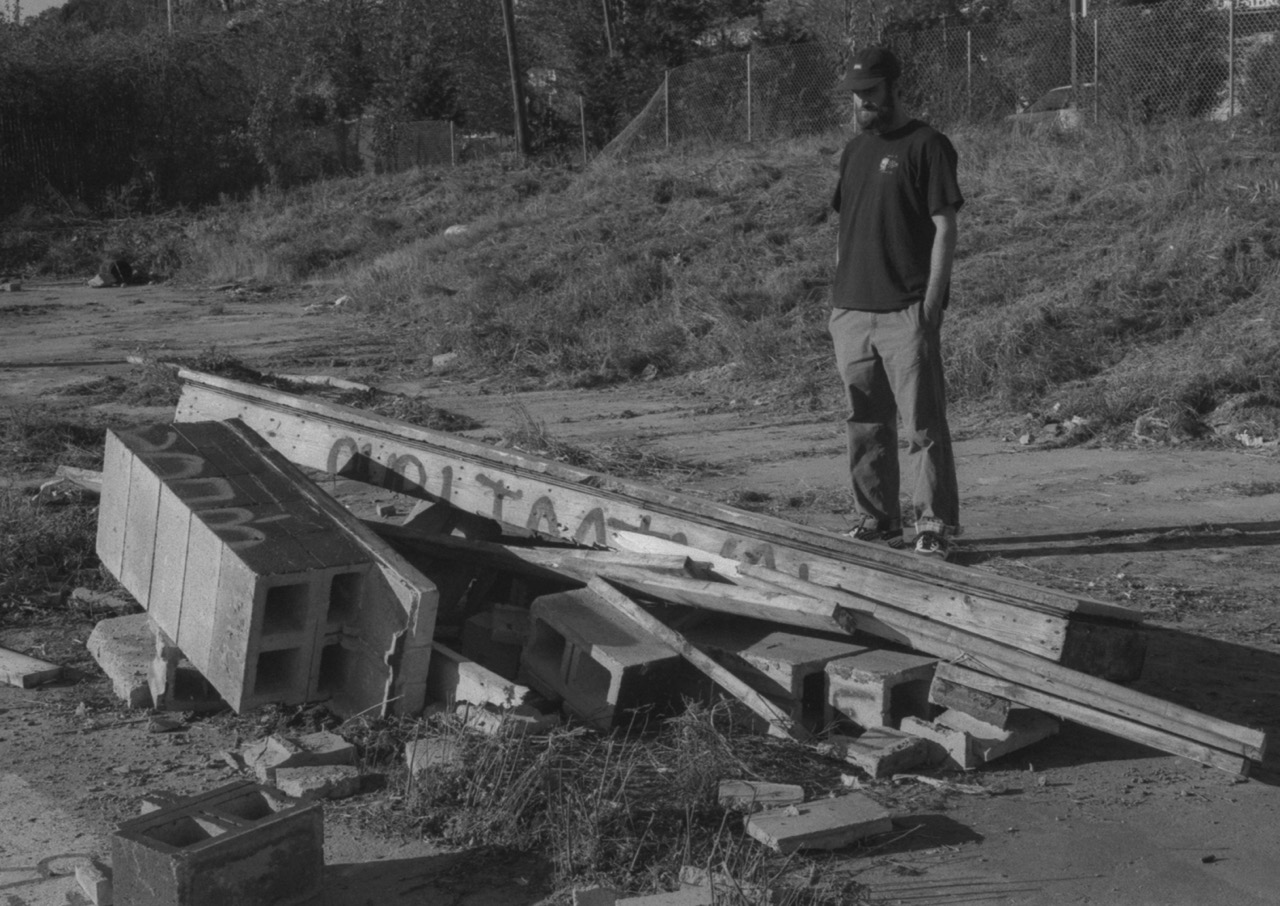
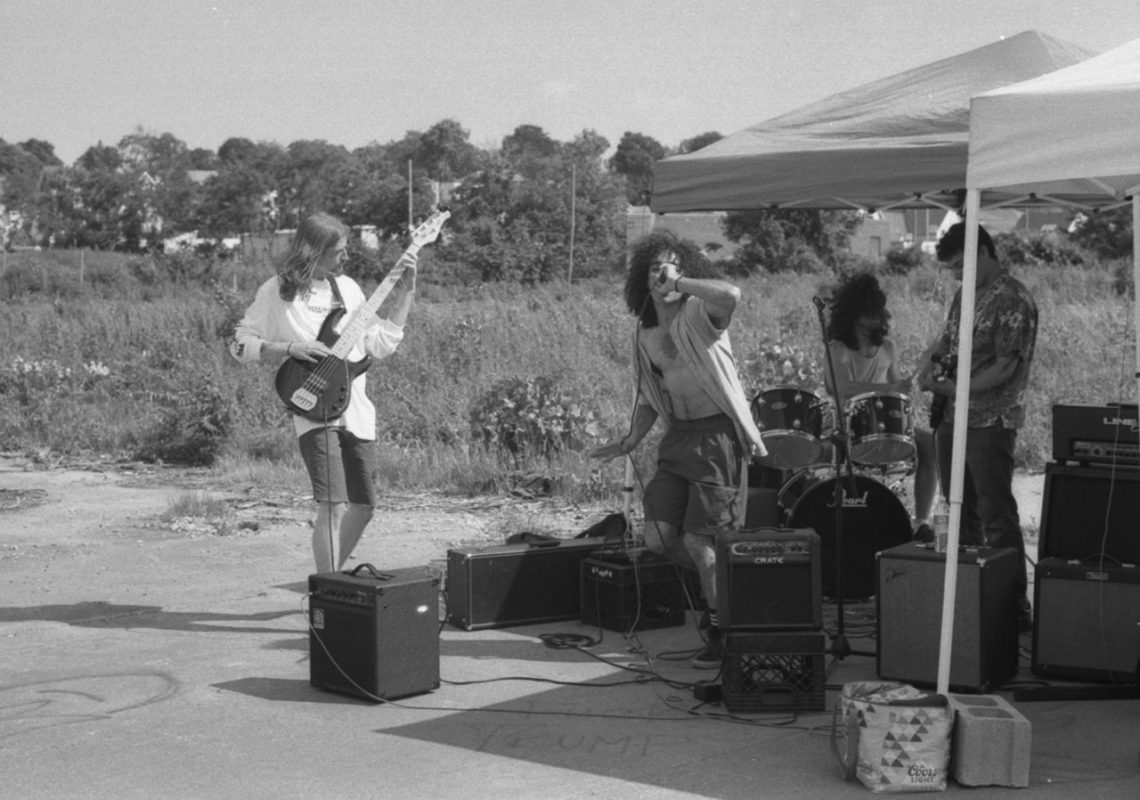
I noticed in the video that in addition to skating, live music, and kids painting the ramps, you also had clips of the people living at the spot. What’s the relationship between the skaters and the unhoused community there?
There used to be a lot more trees and a lot more people living in the kind of mini-forest that was there. The first guy we met, his name was Shadow, and he called it the Beaver Brook Brotherhood — there would sometimes be 20, 30 people living out there. Most people we interacted with were always cool. They would help us sweep up the spot and we would give them extra pallets to build huts. But they would get kicked out once, sometimes twice a year, so the number of people was always fluctuating.
We got pretty close with some of the guys. It was their spot before it was ours and we wanted to respect that. That first summer we even planted some tomatoes, kale, basil, and strawberries.
One of the original builders, this older guy who spent some time living on the streets himself and is now a full fledged urban farmer, had the idea of the “edible skate spot,” combining the DIY spot with some guerrilla gardening and a communal approach to sharing space.
Is Sharkside more of a hub than the old Worcester skatepark, Green Hill?
Yeah, I think so, at least for street skaters. There’s a good amount of people who go there regularly, but [Green Hill] is basically two big bowls, and it’s pretty old so there are some bad cracks. We’re about to get a new skatepark, though, because after Worcide was destroyed, the Worcide guys worked with the city to get a legit park built. That’s supposed to open in August.
Does the new park make you worried about the future of Sharkside?
Yeah, there’s definitely part of me that is. Even with street spots too — Worcester has a small downtown with a bunch of spots packed together, you already get kicked out of most of them, and I think that’s going to get a little worse. I’m sure it (the new park) will be used against us in some way.
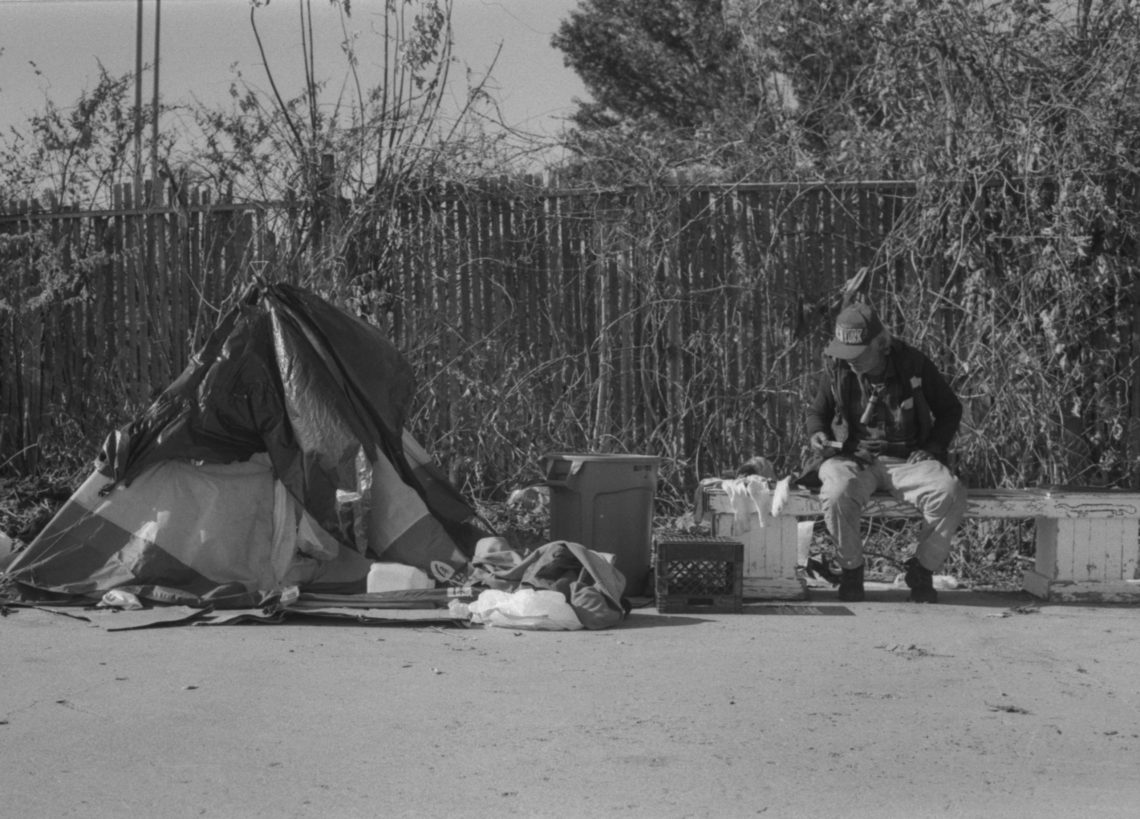
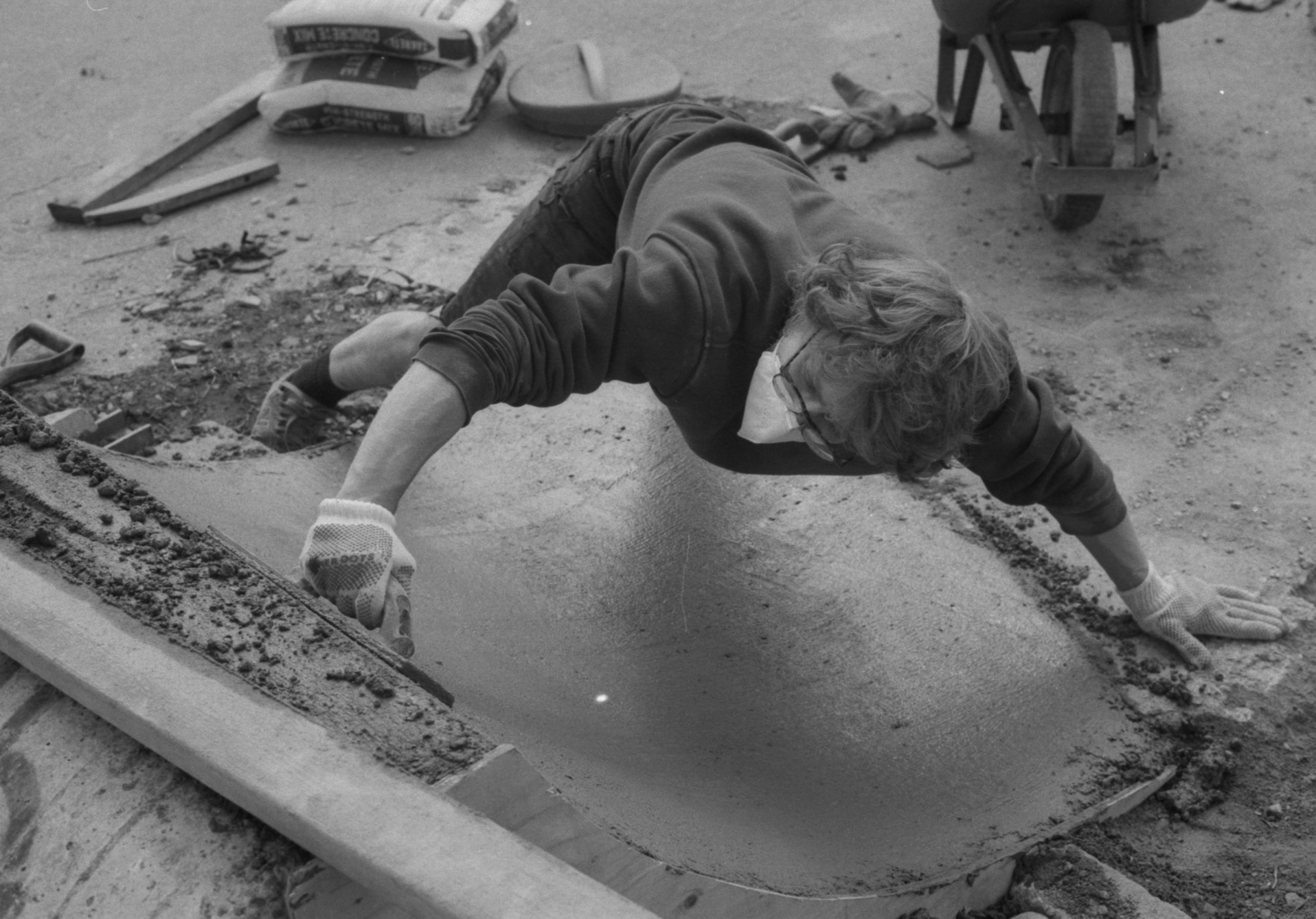
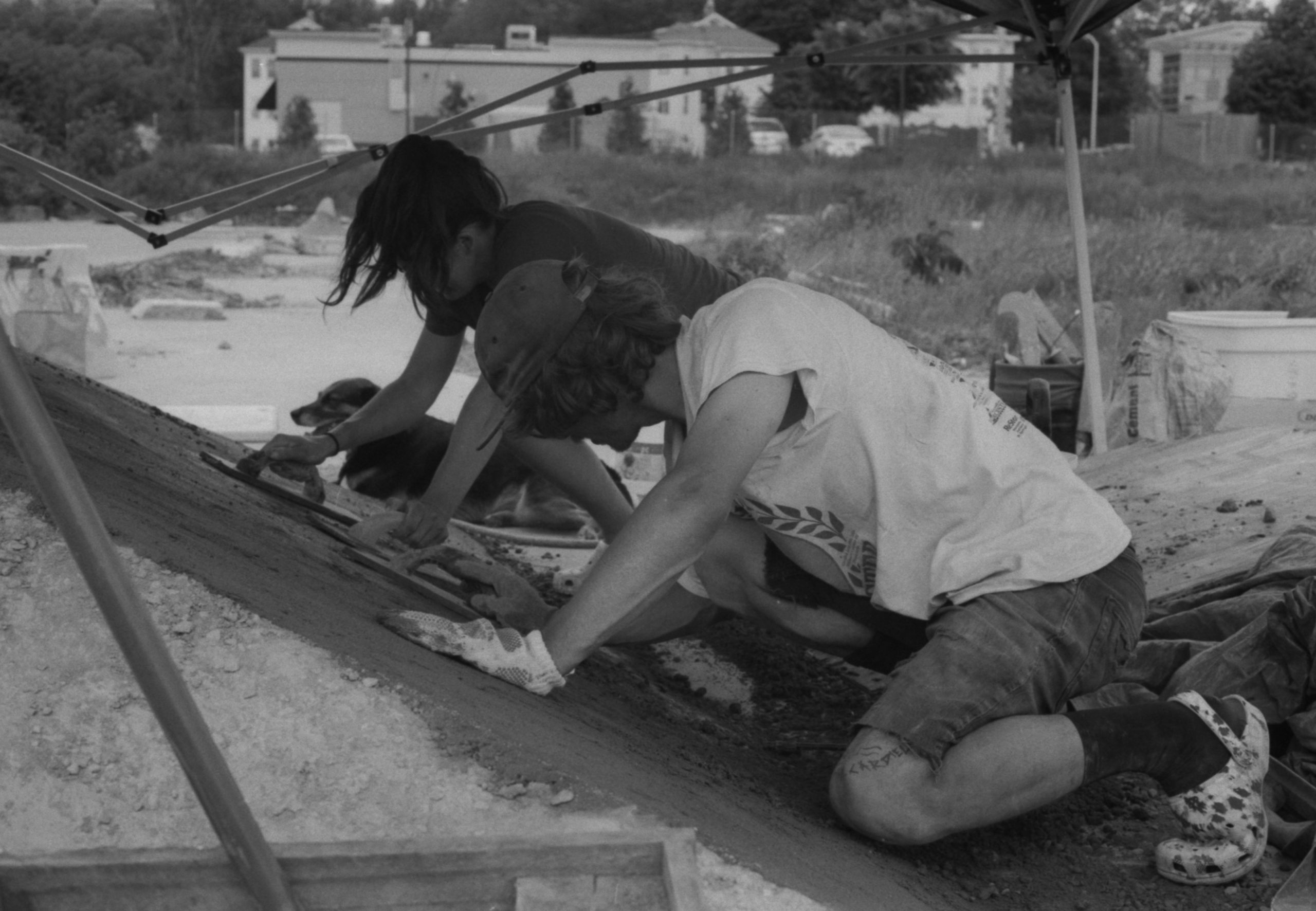
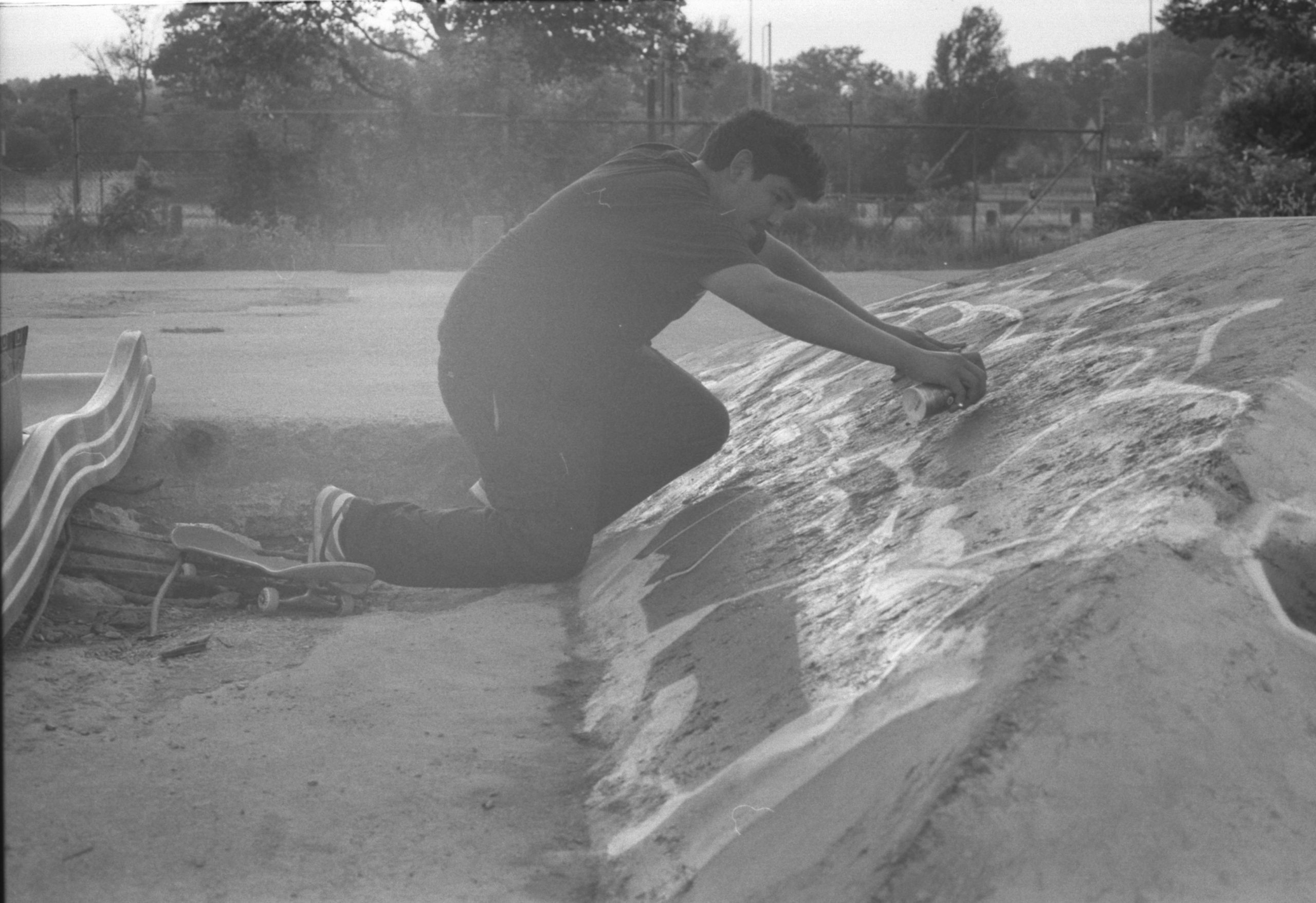
You were involved in running a co-op skateshop a few years back. Tell me about how that turned into your nonprofit, Push Worcester?
When I got back from the first Pushing Boarders conference in 2018, my roommate Andrew and I were thinking about how to organize the Worcester skate community and do something for the scene. I worked in youth programs with high schoolers and middle schoolers, and we started trying to bring skateboarding to these community events and have skate jams.
We were collecting used boards to give out to kids, and we ended up running a summer camp program and setting up a tiny skate shop with used hard goods — Worcester Community Skateshop — in the back of our friend’s bike shop, this little closet. Kids would come in and trade their Target boards for a used setup and that turned into a little community hub. We’d hang out there and then go skate at Sharkside. Then COVID happened so we shut down the shop and shifted our energy to building at Sharkside, and then a lot more people started coming.
We relaunched as Push Worcester, but instead of having a physical shop, we are just focusing on the community programming and collecting boards to redistribute. I quit my full time job last fall to really focus on growing the organization. We’re setting up donation bins around the city where kids can pick up boards, we still do skate jams at different block parties and events, and we have our annual summer camp program. This winter we hosted a pop-up indoor skatepark in an art gallery, and right now we’re just wrapping up our first DIY Skate and Paint program — we have a group of kids we’ve been doing art with at a local graffiti shop and skating with at Green Hill over the past 2 months.
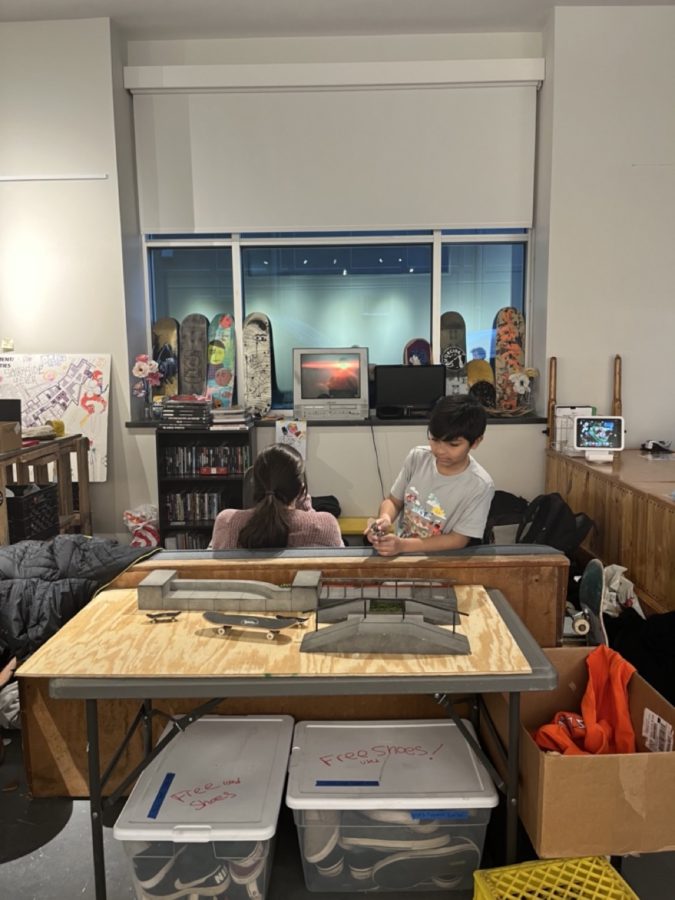
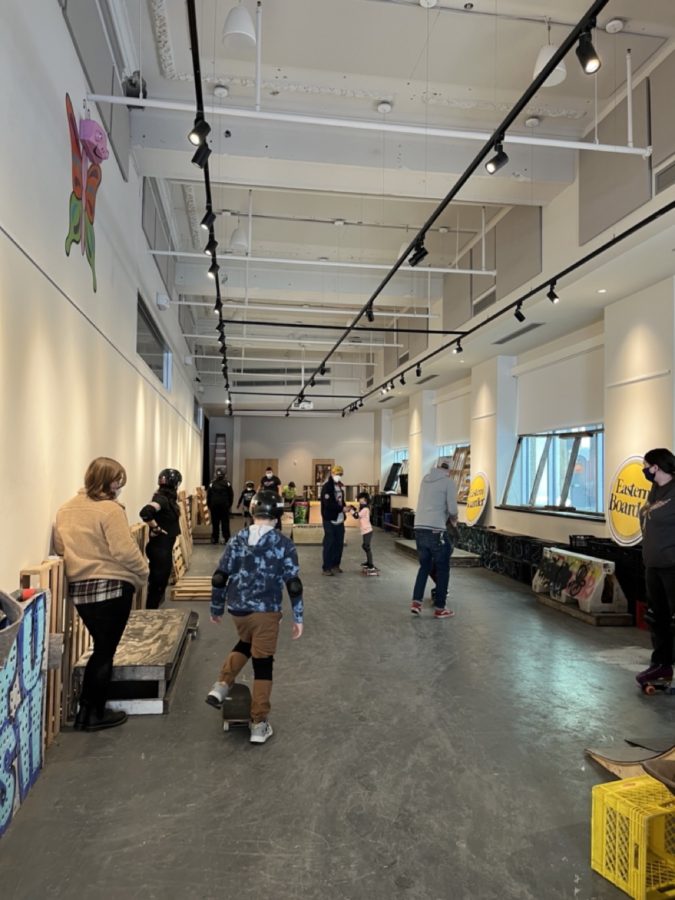
It’s interesting that you’re promoting skating in a more official way through Push Worcester and also as a guerrilla builder at the DIY. What are some of the pros and cons of each approach?
There’s something about the DIY that cannot be replicated anywhere else. I grew up at Eggs, skating in Boston, and it was this plaza where everyone was always there and everyone took care of the spot. That’s something I felt I was missing in Worcester. So how I think about it is we made this plaza where the skate scene can come together and get more activated. The feeling a kid gets from working on a bank with us and then actually skating that bank is the most special part, and something that’s hard to replicate in a formal program.
At the same time, through Push Worcester we can connect with a lot of people who aren’t part of the skate scene or maybe aren’t comfortable jumping right into coming to Sharkside. For people that have been traditionally marginalized in skateboarding, or people who are just new and intimidated, I think Push Worcester can be more approachable and hopefully, through that, we can also welcome them to Sharkside.
The other important pro to Push Worcester is that we can get funding and we can pay leaders in our community to be organizers, skate instructors, and mentors. Sharkside is important for the soul of our scene, but with Push we can support young skaters to get something on their resume, get some hands on leadership training, and practice community organizing — all around skating, something they already love.
I hope we can show our community that just like we can build our own spots to skate, we can shape the alternative places for learning, relating, and engaging in political action that I think we need just as bad as we need a good ledge.
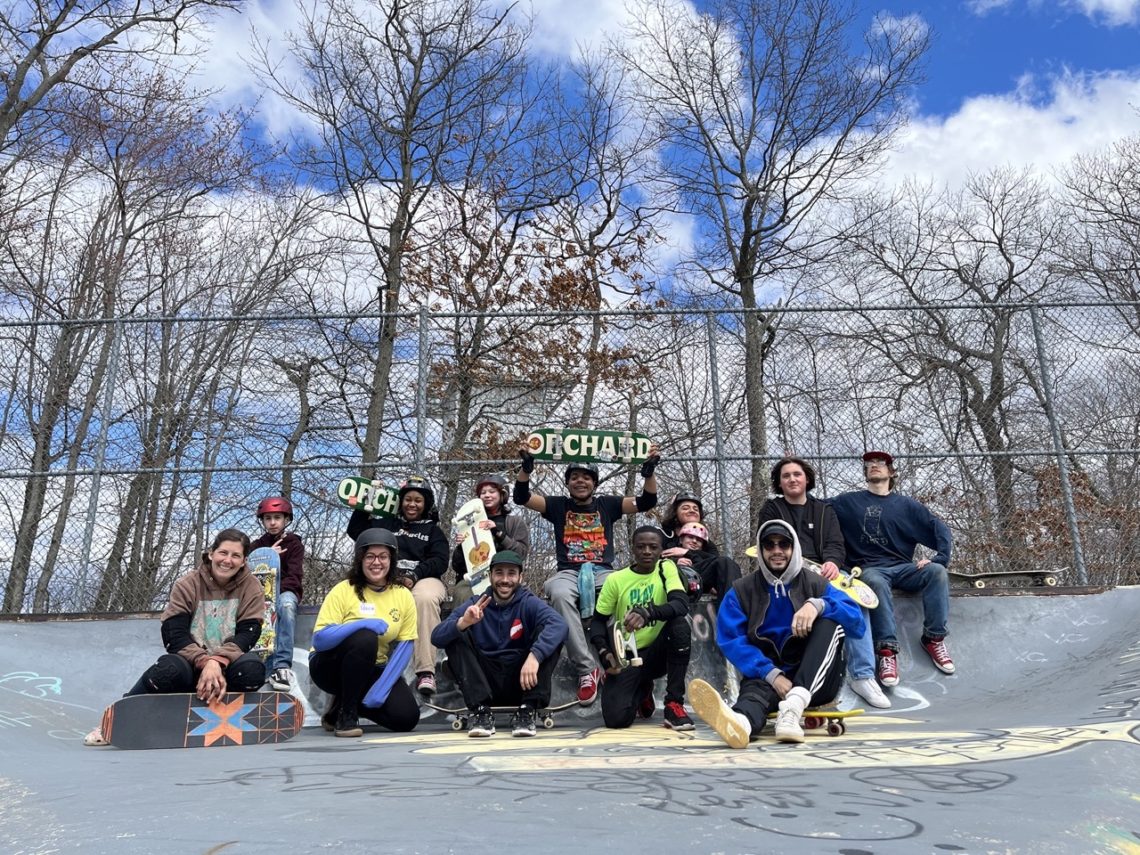
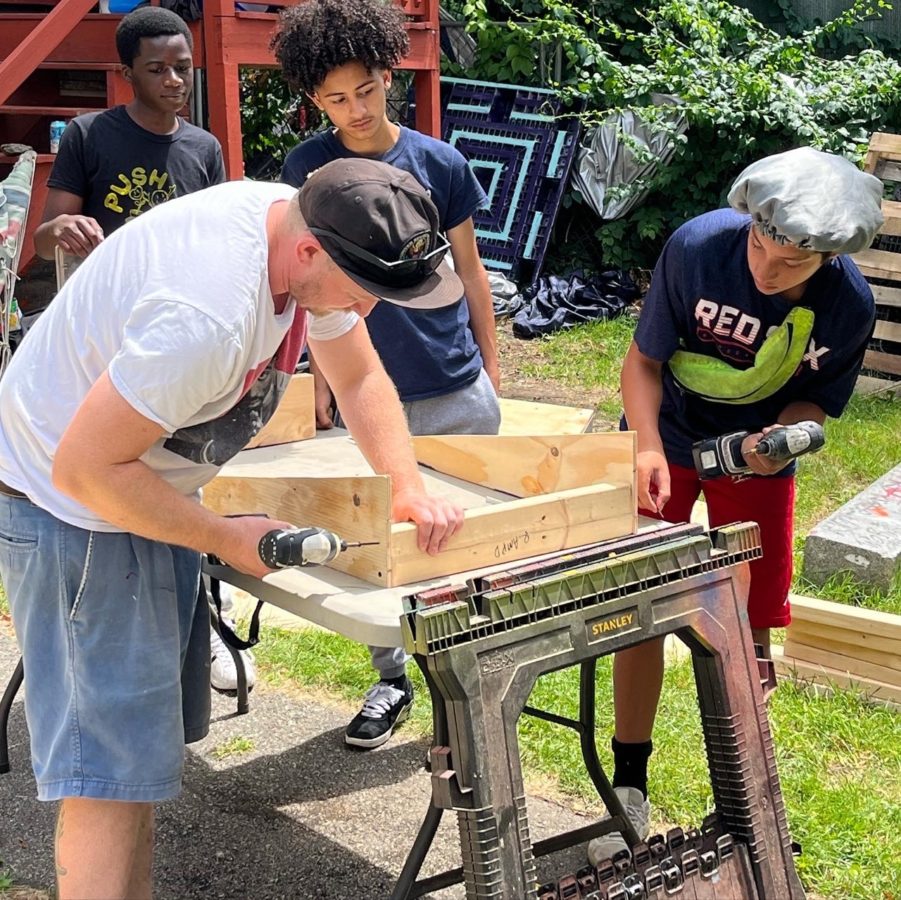
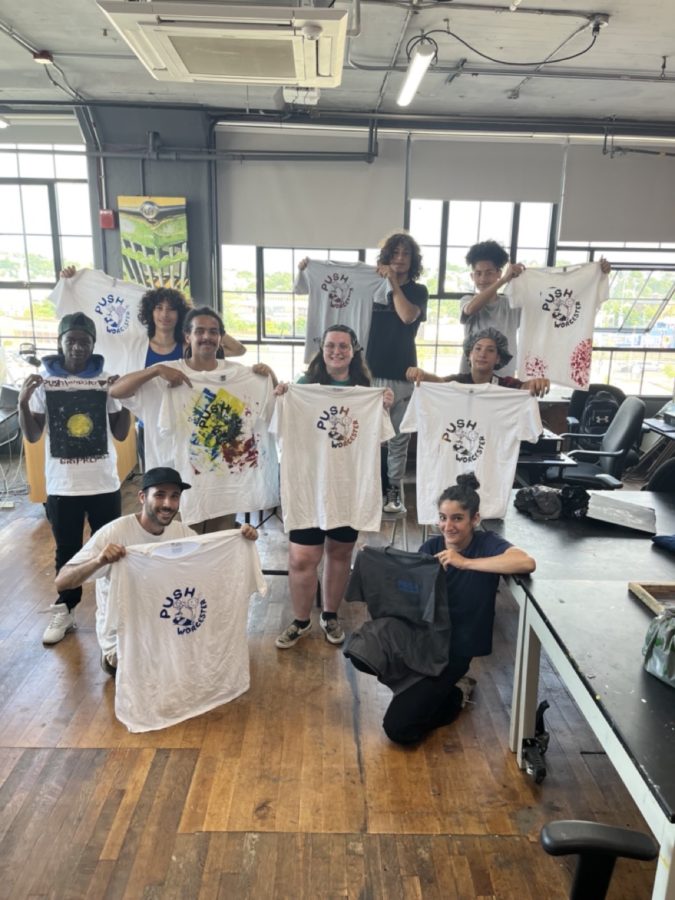
Some DIYs have reputations for being gnarly, both physically and socially, but Sharkside seems to be pretty welcoming to everyone. How do you foster that environment?
People are tapping boards for everyone, no matter what tricks they’re doing. People are hanging out, laughing, talking, and I think there’s generally an encouraging atmosphere. We wanted to make a DIY that was more like a multi-use community plaza.
Worcester is the second biggest city in New England and it’s an extremely diverse city, so a broad range of people come through. I think what matters most is how much time you spend there. There’s a pride that comes with spot stewardship, and a type of bond that is built by being at the same place day after day. I can think of a few people who don’t even skate but who put in more hours landscaping and building than most of the skaters.
That really comes through in the video. Not only are people tapping boards for kids who are learning, but those kids are also getting three-minute sections in the full-length. Not to mention the people on roller skates!
Yeah. I always have the VX there, and I wanted to make a video that had all the locals doing their thing. Growing up, video premieres were my favorite, and seeing people I knew — and the few times I saw myself on the big screen — was very meaningful. So I wanted the video to show the full Sharkside experience and all the people who call the place home. I wanted it to be a portal into that world, a time capsule in a way, with everyone who brought the place to life getting their shine.
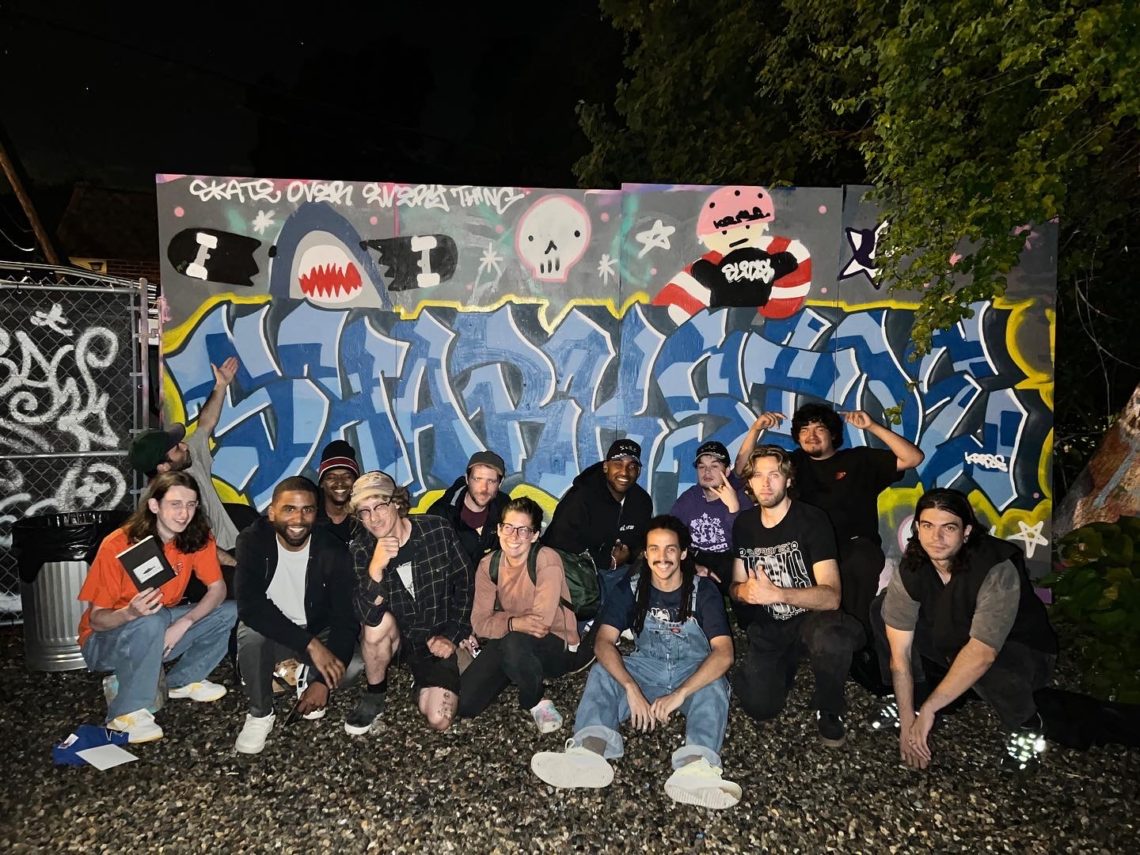
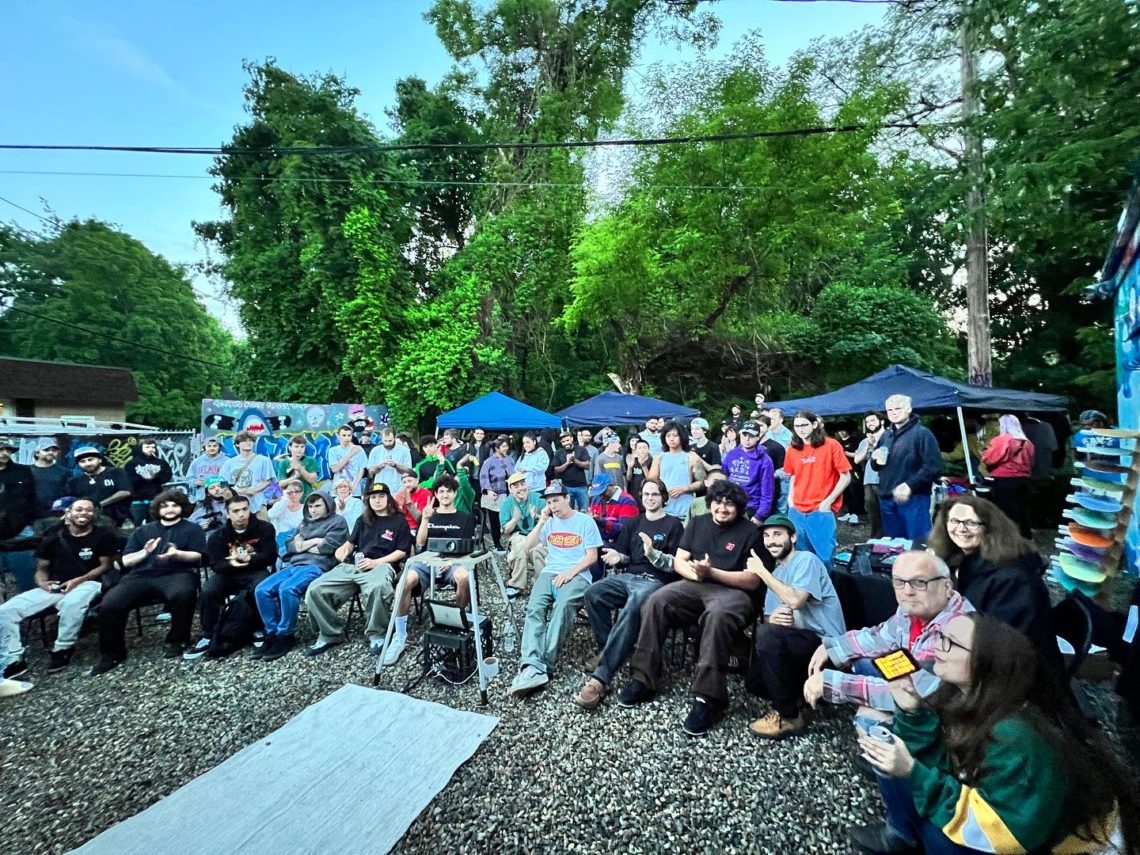
What are your hopes for the future of the Worcester skate scene?
I mean, I know that the new skatepark is going to bring a ton more people to Worcester, so I’m glad that we’ve had this time with Sharkside where the skate scene could come together. I hope we get some more time to rebuild Sharkside, but more importantly that the next generation has been bitten by the DIY bug, and wants to carry on Worcester’s unsanctioned spot building traditions. Overall I hope the scene continues to grow, I hope new places to skate keep popping up whether they be skateparks, DIYs, or street spots, and I hope we can continue finding ways to welcome new people into the community, while pushing Worcester to become a more skateable city.
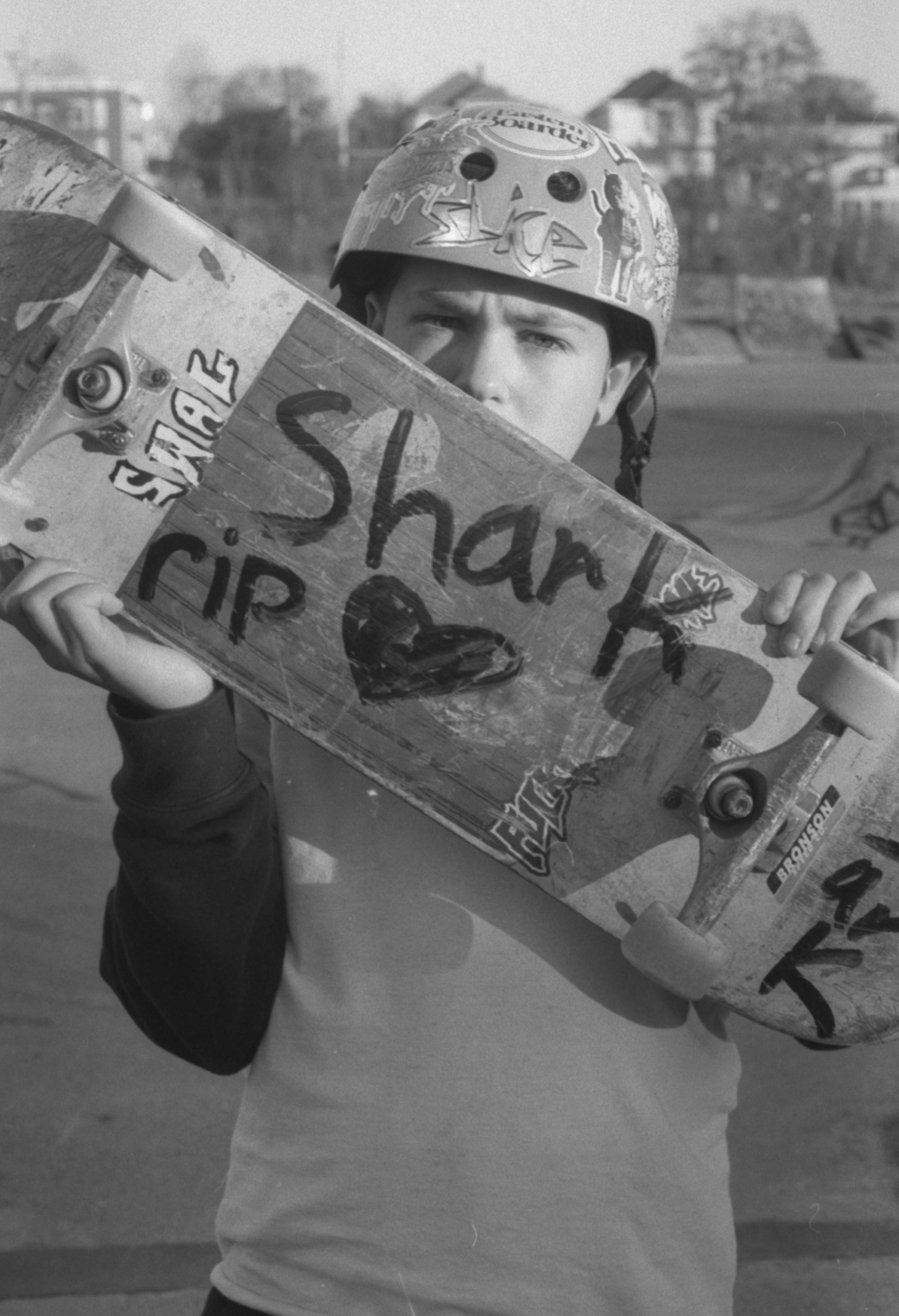
Any shoutouts?
Mad love to all my beavers! Shout out to everyone who spent time skating, working, and sitting around at Sharkside. We wouldn’t have tried without Worcide DIY, thanks for showing us the way. Big thanks to Artifakt Supply, Orchard Skateshop, Eastern Boarder, Worcester Roots Project, The Greater Worcester Community Foundation, the Worcester Arts Council, The Massachusetts Cultural Council, and the United Way of Central MA for investing in Push Worcester and making it possible for us to create meaningful opportunities for youth development and youth leadership through skateboarding. Thank you Steve and Kev, the RAW New England family, and all my older siblings and mentors from the Boston skate community. Finally, thank you Hallie B, my fam, and all my friends for the love and support! Peace!
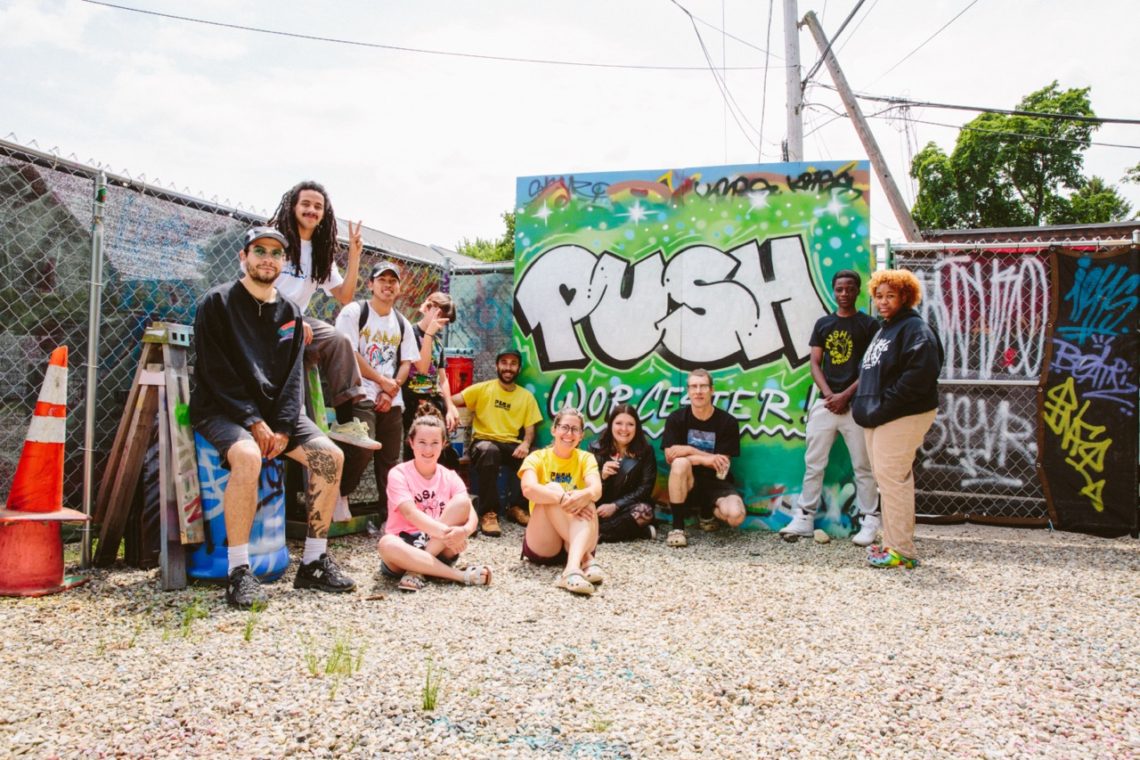
Editors Note: Last night I received an email from Jacob letting me know that more demolition had gone down at Sharkside the night before this post went live.
“They toppled over our rebuilt ledge, some other wooden stuff, and seemed to try to start chopping up the pyramid. In a way it’s kinda perfect that it happened the night before the video is going live on the internet.” -Jacob Folsom-Fraster
I doubt this will be the last we hear of Sharkside, so follow @beaverbrookdiy and go check this city out when you can, and bring some donations for Push Worcester while you’re at it.
